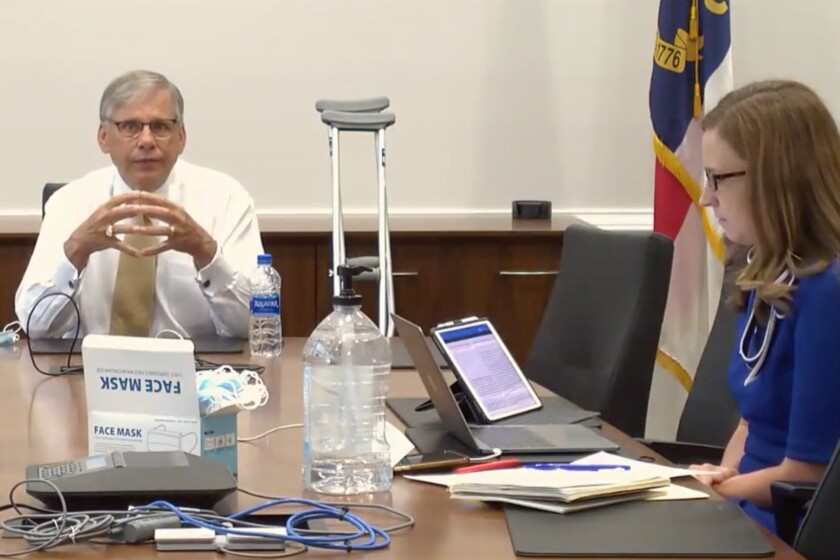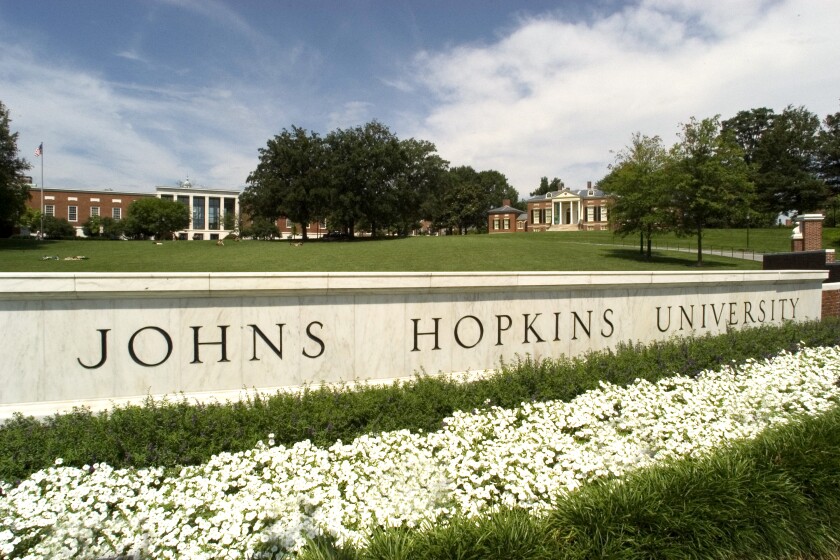Two campuses make opposite plans in reaction to the coronavirus.

Courtesy of UNC-Pembroke
There's no standard plan for how colleges should handle the coronavirus pandemic. There's not even a uniform plan for how states should deal with the virus — but that's a another story.
This one is about how two campuses are planning the fall semester amid the virus.
In June, when cases were rising in North Carolina, the University of North Carolina at Pembroke held a virtual town hall. Robin G. Cummings, the chancellor, was clear when faculty members asked him why the university was planning for an in-person fall under those conditions.
“The short answer is that this is a decision that we as a system made some time back," Cummings said. The chancellor, a medical doctor who once served as acting state health director, said he feared that if the campus had a virtual fall semester, some students would take a gap year. A significant part of the university's revenue comes from tuition, so to "some degree" the decision was financial, he said.
Beyond the financial worries, Pembroke must deal with other risks. The university is located in Robeson County, which has seen North Carolina's highest rate of coronavirus infections lately. Robeson and surrounding counties are home to the Lumbee Tribe (of which Cummings and his wife are members). And 42 percent of Robeson County residents identify as American Indian and 24 percent as Black, two demographic groups that have been found the most likely to die of Covid-19.
Still, this week students started moving into dorms filled to their usual capacity. The university doesn't plan universal testing for the virus. And because of limited space, Pembroke will encourage students who test positive to return to their family homes.
Meantime, 400 miles to the north, the Johns Hopkins University made an announcement on Thursday that was nearly the opposite. Hopkins reversed its pledge to bring undergraduates back to campus for in-person classes, housing, and activities, and it urged students to stay away from Baltimore for the fall semester. Employees were told that they should expect to work from home through the year.

Courtesy of Johns Hopkins U.
Hopkins has so many factors going for it: a large endowment, breakthrough research on the virus, a key virus tracker, and close ties to world-renowned medical services. But even one of the country's heaviest-hitting research universities had its plans stymied by Covid-19.
However, Pembroke and Hopkins aren't complete polar opposites. And where those two institutions overlap, yours may too. Both universities are under serious financial strain. Hopkins said it expected a $475-million
net loss through June 2021, largely blamed on the loss of revenue from physician clinical services. Hopkins will also reduce undergraduate tuition by 10 percent this fall. In June, Cummings told Pembroke administrators that the university faced a 10-percent budget cut from state appropriations.
What differentiates Pembroke and Hopkins allowed the institutions to make contrasting fall plans. What they have in common — financial strain — raises the stakes that their plans must work.
Read our Francie Diep's story on Pembroke and our Lindsay Ellis's story on Hopkins.






No hay comentarios:
Publicar un comentario